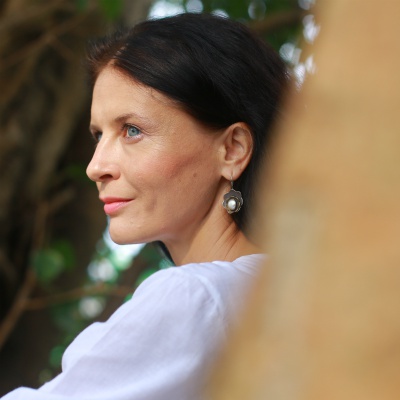We use cookies to optimise our website functionality and give you the best experience possible. Please, accept our Terms and Conditions. ACCEPT
Ardhanarishvara symbolizes that the male and female principles are inseparable.
Ardhanarishvara symbolizes that the male and female principles are inseparable. The composite form conveys the unity of opposites in the universe. The male half of Ardhanarishvara stands for Purusha and female half is Prakriti. Purusha is the male principle and passive force of the universe, while Prakriti is the female active force; both are “constantly drawn to embrace and fuse with each other, though separated by the intervening axis”. The union of Purusha (Shiva) and Prakriti (Shiva’s energy, Shakti) generates the universe, an idea also manifested in the union of the Linga of Shiva and Yoni of Devi creating the cosmos.
The iconographic 16th century work Shilparatna, the Matsya Purana and Agamic texts like Amshumadbhedagama, Kamikagama, Supredagama and Karanagama – most of them of South Indian origin – describe the iconography of Ardhanarishvara. The right superior side of the body usually is the male Shiva and the left is the female Parvati; in rare depictions belonging to the Shaktism school, the feminine holds the dominant right side. The icon usually is prescribed to have four, three or two arms, but rarely is depicted with eight arms. In the case of three arms, the Parvati side has only one arm, suggesting a lesser role in the icon.
The male half wears a jata-mukuta (a headdress formed of piled, matted hair) on his head, adorned with a crescent moon. Sometimes the jata-mukuta is adorned with serpents and the river goddess Ganga flowing through the hair. The right ear wears a nakra-kundala, sarpa-kundala ("serpent-earring") or ordinary kundala ("earring"). Sometimes, the male eye is depicted smaller than the female one and a half-moustache is also seen. A half third eye (trinetra) is prescribed on the male side of the forehead in the canons; a full eye may also be depicted in middle of forehead separated by both the sides or a half eye may be shown above or below Parvati's round dot. A common elliptical halo (prabhamandala or prabhavali) may be depicted behind the head; sometimes the shape of the halo may differ on either side.
In the four-armed form, a right hand holds a parashu (axe) and another makes an abhaya mudra (gesture of reassurance), or one of the right arms is slightly bent and rests on the head of Shiva's bull mount, Nandi, while the other is held in the abhaya mudra gesture. Another configuration suggests that a right hand holds a trishula (trident) and another makes a varada mudra (gesture of blessing). Another scripture prescribes that a trishula and akshamala (rosary) are held in the two right hands. In the two-armed form, the right hand holds a kapala (skull cup) or gestures in a varada mudra. He may also hold a skull. In the Badami relief, the four-armed Ardhanarishvara plays a veena (lute), using a left and a right arm, while other male arm holds a parashu and the female one a lotus.
The Shiva half has a flat masculine chest, a straight vertical chest, broader shoulder, wider waist and muscular thigh. He wears a yagnopavita (sacred thread) across the chest, which is sometimes represented as a naga-yagnopavita (a snake worn as a yagnopavita) or a string of pearls or gems. The yajnopavita may also divide the torso into its male and female halves. He wears ornaments characteristic of Shiva's iconography, including serpent ornaments.
In some North Indian images, the male half may be nude and also be ithyphallic (urdhavlinga or urdhavreta: with an erect phallus), or with a full or half phallus and one testicle. However, such imagery is never found in South Indian images; the loins are usually covered in a garment (sometimes a dhoti) of silk or cotton, or the skin of a tiger or deer), typically down to the knee, and held in place by a sarpa-mekhala, serpent girdle or jewellery. The right leg may be somewhat bent or straight and often rests on a lotus pedestal (padma-pitha). The whole right half is described as smeared with ashes and as terrible and red-coloured or gold or coral in appearance; however, these features are rarely depicted.
The female half has karanda-mukuta (a basket-shaped crown) on her head or well-combed knotted hair or both. The left ear wears a valika-kundala (a type of earring). A tilaka or bindu (a round red dot) adorns her forehead, matching Shiva's third eye. The left eye is painted with black eyeliner. While the male neck is sometimes adorned with a jewelled hooded serpent, the female neck has a blue lotus matching it.
In the four-armed form, one of the left arms rests on Nandi's head, while the other is bent in kataka pose and holds a nilotpala (blue lotus) or hangs loosely at her side. In the three-armed representation, the left hand holds a flower, a mirror or a parrot. In the case of two-armed icons, the left hand rests on Nandi's head, hangs loose or holds either a flower, a mirror or a parrot. The parrot may be also perched on Parvati's wrist. Her hands are adorned with ornaments like a keyura (anklet) or kankana (bangles).
Parvati has a well-developed, round bosom and a narrow feminine waist embellished with various haras (religious bracelets) and other ornaments, made of diamonds and other gems. She has a fuller thigh and a curvier body and hip than the male part of the icon. The torso, hip and pelvis of the female is exaggerated to emphasize the anatomical differences between the halves. Though the male private parts may be depicted, the female genitalia are never depicted and the loins are always draped. She wears a multi-coloured or white silken garment down to her ankle and one or three girdles around her waist. The left half wears an anklet and her foot is painted red with henna. The left leg may be somewhat bent or straight, resting on a lotus pedestal. In contrast to the Shiva half, the Parvati half - smeared with saffron - is described as calm and gentle, fair in colour. Very rarely, Parvati is shown with parrot-green skin, this represents how she is the daughter of the mountains but mostly she is shown as Gauri (the fair one). She may be draped in a sari covering her torso and legs.

Founder & Director of Ayurveda Trails, healing collection of (extra)ordinary people and their stories, whose experiences are transferred into various trails shared by travelers.

Dedicated to everyone, who is searching answers to these questions: What is ayurveda? How is this ancient medical system connected with yoga, meditation, healthy food, relaxation in nature and modern life style?